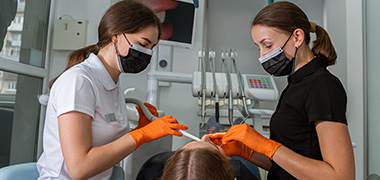
This role has a moderate level of AI exposure. AI can enhance efficiency for some tasks, but this job still relies on human skills and decision-making.
Explore all careersA Radiographer operates x-ray equipment to capture images as requested by medical professionals, ensuring patient safety and proper positioning.
In Australia, a full time Radiographer generally earns $2,020 per week ($105,040 annual salary) before tax. This is a median figure for full-time employees and should be considered a guide only. As you gain more experience you can expect a potentially higher salary than people who are new to the industry.
 Courses.com.au Team
Courses.com.au Team
This industry has seen an increase in employment numbers in recent years. There are currently 8,200 people working as a Radiographer in Australia compared to 7,300 five years ago. Radiographers usually work in larger towns and cities where medical imaging facilities are located.
Source: Australian Government Labour Market Insights
 Courses.com.au Team
Courses.com.au Team
If you’d like to embark on a career as a Radiographer, consider enrolling in a Certificate IV in Dental Assisting (Radiography Specialisation). You could also consider a Certificate IV in Dental Assisting (Radiography and Oral Health Promotion Specialisation) or a Dual Certificate III in Dental Assisting and Certificate IV in Dental Assisting with Radiography Specialisation.
 Courses.com.au Team
Courses.com.au Team
Browse occupations related to Radiographer



Radiographer courses in New South Wales provide aspiring professionals the opportunity to gain valuable skills and knowledge in the rapidly growing field of medical imaging. As healthcare demands continue to rise in this vibrant region of Australia, training institutions offer a variety of accredited programs designed to equip students with the essential competencies for a successful career in radiography. Pursuing one of these courses not only leads to a rewarding job but also opens doors to various related roles within the healthcare sector.
Through comprehensive training in Radiography and Medical Imaging, individuals can develop expertise in essential techniques such as X-ray imaging, MRI, and CT scans. This foundation is crucial for those interested in job roles such as Radiologist, MRI Technologist, and Radiation Therapist. By completing radiographer courses in New South Wales, students position themselves at the forefront of medical advancements while contributing to improved patient outcomes across the state.
Additionally, those who obtain formal training may also find career paths as Medical Imaging Technologists, Sonographers, or even Nuclear Medicine Technologists. The skills gained through these courses are versatile and applicable across numerous sectors in healthcare, making radiography a rapidly evolving and rewarding field of study.
As students complete their studies in Radiography and Medical Imaging, they may also explore other related job roles such as Radiology Technicians, PET Technologists, and Mammographers. The diverse array of opportunities highlights the importance of continuing professional development and staying abreast of new technologies within the healthcare landscape. The training received in these courses also fosters a commitment to patient safety, particularly for future Radiation Safety Officers.
In conclusion, prospective students should explore the various Radiographer courses in New South Wales available through reputable Registered Training Organisations. With the proper qualifications, individuals can secure fulfilling roles in medical imaging and related fields, ultimately contributing to the betterment of healthcare in New South Wales. The range of opportunities available within this sector reflects the ongoing evolution of health services, ensuring that aspiring radiographers have a significant impact on patient care across the region.